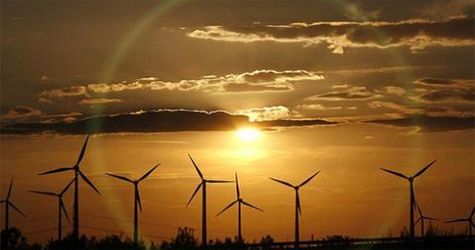Ahead of a Westminster Hall debate on onshore wind later today, Energy Minister Charles Hendry sets out his vision for a new approach to engaging with potential host communities
The recent Ipsos Mori/University of Cardiff survey on public perceptions of climate change found that one third of Britons think the science on climate change has been exaggerated. To policy makers, committed to making this the greenest Government ever, that presents a significant challenge, so the first step we need to take is to understand the reasons behind this view.
There are two distinct groups of people in this category: those who genuinely do not believe that the overwhelming body of scientific opinion is correct; and those whose dislike of particular aspects of the response to climate change is so great that they believe the solution is worse than the problem it is seeking to address.
The Government recognises that the hectoring approach has not worked. As Energy and Climate Change Secretary, Ed Miliband likened those who oppose wind farms to people who drive across zebra crossings without stopping. But such castigations have only led to more entrenched opposition and a lack of popular consent for local wind farm developments.
That cannot work in the long-term and a new approach is needed.
Wind power should continue to be part of our energy portfolio. Unlike other technologies, wind energy’s costs are in the construction and maintenance alone as the resource itself is free, so it helps protect consumers against the volatile but generally increasing cost of fossil fuels. And at a time when we are becoming increasingly dependent on imported sources of ‘fuel’ – coal, gas, oil and uranium – our energy security is enhanced by a resource which is ours alone. Of course, wind power is volatile but this is currently easy to manage, and in future with more wind, will be managed with energy storage, back-up plant or demand management.
If a nuclear plant goes down, as Sizewell B did for seven months last year, it doesn’t produce a single megawatt of power, but during that time our wind turbines produced enough electricity for nearly 800,000 homes.
No-one suggests that wind is the whole solution, but alongside nuclear, clean coal and gas it should continue to be part of the solution to the massive energy security and low carbon challenges we face as a nation.
However, to do so, it needs more democratic legitimacy than it has today and it is our intention to ensure that happens.
The planning system does have safeguards in place to protect communities from unacceptable developments. We have already started to review the issues which often cause concern to local communities – such as the assessment of noise and the flickering effect when the blades rotate.
And now we must go much further.
Wind turbines should be positioned where the wind resource is strongest. So this year we are bringing forward a full review of the funding mechanism, so we can ensure that subsidies will not make it attractive to put windfarms in unsuitable locations. Onshore wind is by far the cheapest large-scale renewable energy source and without it, our electricity bills would have to go up. But the funding mechanism must reflect reductions in costs.
The cost of grid connections also means there is an incentive to put windfarms closest to where the electricity is needed, rather than where the wind is strongest. That is why Ofgem’s fundamental review of the way in which transmission charges are levied is so important. It is also why the Government made clear at the start of Ofgem’s review that the transmission charging regime must deliver security of supply as well as low carbon generation. It is Government’s responsibility to ensure that the charges consumers’ pay for renewable energy should be used as efficiently as possible.
Most important of all, there needs to be a new relationship between wind farms and the communities which host them. At present, too often a community can see what it will lose by having a windfarm in its midst, but it cannot see what it gains.
Our localism proposals will mean that communities – through their elected councillors – will decide for themselves how they should develop. The top-down targets and requirements are going, so they will need a much clearer understanding of the benefits they will receive. That is why we also want to see direct financial benefits through greater community ownership of windfarms and why we have committed that business rates should be kept locally for renewable energy developments. The Localism Bill also ensures developers and local communities talk to each other much earlier so local needs can be factored in as proposals shape up and local benefits – such as new jobs and new skills training – can be built into proposals for development. Wind developers are about to publish their own standards on working with communities and I welcome these.
The Government believes windpower has an important contribution to make both to our energy security and to our low carbon goals, but it should not be imposed on unwilling communities outside of a full and proper democratic process. These changes will address the democratic deficit in wind power.







